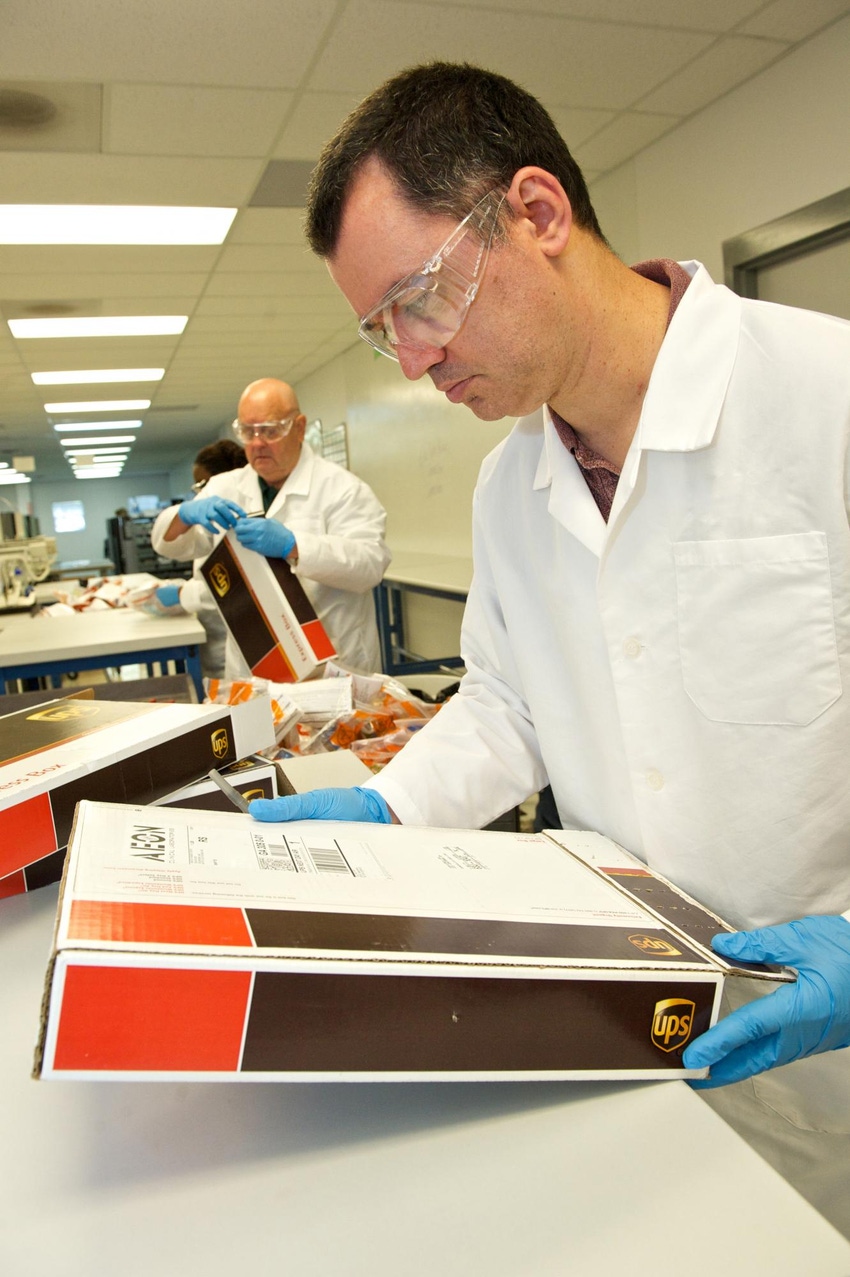May 6, 2016

MyGenetx is playing a central role in the emerging practice of personalized medicine. As a healthcare molecular and general chemistry laboratory, the company processes genetic tests for patients before they begin drug therapies to help doctors determine their likely responses to particular classes of drugs. “Our passion to change the way people are treated and diagnosed around the world has guided our team of experts to develop accessible, affordable, and actionable tests,” MyGenetx explains on its Web site.
Customer-friendly logistics is critical to its business model. MyGenetx provides blood collection supplies to its clients along with shipping instructions and packaging. Originally handwriting shipping waybills, an approach reportedly quite common with laboratories, the company decided to set up a WorldShip account with UPS and began preprinting the waybills for customers to complete and return with patients’ blood samples. The system eliminated the handwritten approach, but the process of producing and managing the inventory of preprinted labels and then physically sending them to customers was time and labor intensive, and it didn’t provide any incoming shipment visibility.
COO Jimmy Kendrick knew “there had to be a better solution,” he recounts. “We wouldn’t know we’d be getting a package unless someone would call us asking us about a specimen,” he said. “How do you know to track something before it’s been picked up and scanned?
“We do a lot of things differently here—we’re trying to change healthcare,” he adds. “We’re a growing, solutions-driven company. Here was an opportunity to question the normal.”
Given Kendrick’s background in retail, he was well positioned to take action. “I spent 20 years with a company that serviced big box retailers, focusing on vendor relations and helping to get products into those stores. Tracking products in the supply chain was a big part,” he says.
UPS sent a team out to MyGenetx to investigate potential processes, Kendrick says. The team developed a new approach that enables MyGenetx’s customers to process shipments, generate labels themselves, and queue drivers for pick up. “Customers access the system through the UPS site. They log in, print out a label, put the specimen in a UPS-approved insulated package, and put the sleeve on the package” for shipping, Kendrick explains. “We get an end-of-day report in Excel on all incoming shipments with tracking numbers and the time of pick up. We just copy and paste all the information into our WorldShip system. Once in WorldShip, we can see it the four to five times it’s scanned. It’s all the visibility we never had before—it’s like we were creating the manifests.
“There’s visibility in knowing where customers’ packages are before they call—that’s big in customer service,” he continues. “We can proactively have a conversation, such as ‘Your package is grounded in a windstorm, and we’ve called UPS.’ And if we see that they placed an order, but we don’t get it, we can contact them.”
The solution UPS provided was a reverse-logistics UPS lab portal branded with the MyGenetx logo, explains Matthew Morgan, UPS’s account executive for MyGenetx. “Each clinic has a log-in to process specimens and generate its own UPS return labels. The lab portal functionality allows MyGenetx to forecast the inbound workload for each day.”
Adds Steve Cody, UPS Marketing Manager, Healthcare Segment: “When we saw their growth plans—growing the number of inbound samples—there was value in the visibility of knowing what would be hitting their door each morning so they could plan their workload. Early on in the discussions, they wanted UPS to be the anchor for what they do. They wanted to change the dynamics of their inbounding process.”
UPS’s solution “can be tailored to each customer in a custom-fit portal. With the system providing prepopulated information, customers hit ‘Ship’ and a label is generated, including the bar code and other information unique to the shipment. It makes it really simple,” says Cody. “Prepopulated information including service level and other characteristics of shipments reduces errors and potential delays.”
“Everything is seamless and automated for the customer,” Kendrick says. “Efficiency wise, we’re not having to preprint labels.”
The solution has helped support MyGenetx’s growth. “We’ve grown and added more accounts. We have the ability to implement and add new customers quickly—it has made it a very effective process,” says Kendrick.
Says Robin Hooker, UPS Director of Healthcare Marketing: “Our philosophy is, ‘It’s a patient, not a package.’ This has never been truer than with labs. Providing the best services and visibility are key, as are delivery solutions optimized for ground and air.”
“UPS is a great logistics partner for us and has done a lot to help us,” concludes Kendrick.
********************************************************
Changing packaging standards, smart packaging, dosing safety, and other topics will be discussed during the June 16 conference at EastPack, "Ensuring Patient Safety & Product Efficacy Through Successful Packaging," held in New York City.
About the Author(s)
You May Also Like




